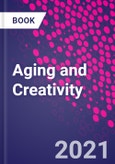Aging and Creativity examines the effects of aging on creative functioning, including age-related changes in cognition, personality, and motivation that affect performance or output. The book reviews and summarizes both lab-based and real-world-based studies. Changes in working memory, speed of processing, learning efficiency, and retrieval from long-term memory are all discussed as factors influencing creativity, as are health changes and changes in social roles with later age. The book concludes with practical implications of age effects on creativity for older people in work and everyday life.
Please Note: This is an On Demand product, delivery may take up to 11 working days after payment has been received.
Table of Contents
1. Creativity: Introduction2. Age and Aging
3. Creative Competence and Age
4. Real World Studies of Creative Productivity with Age
5. Protective Factors and Risk Factors for Later Life Creativity
6.�Creative Thinking: Restructuring and Insight
7. Noncognitive Factors in Creative Thinking: Personality, Psychopathology, and Mood
8. Theories and Models of Creative Processes
9. Aging Effects on Cognitive and Noncognitive Factors in Creativity
10. Integrative Discussion








